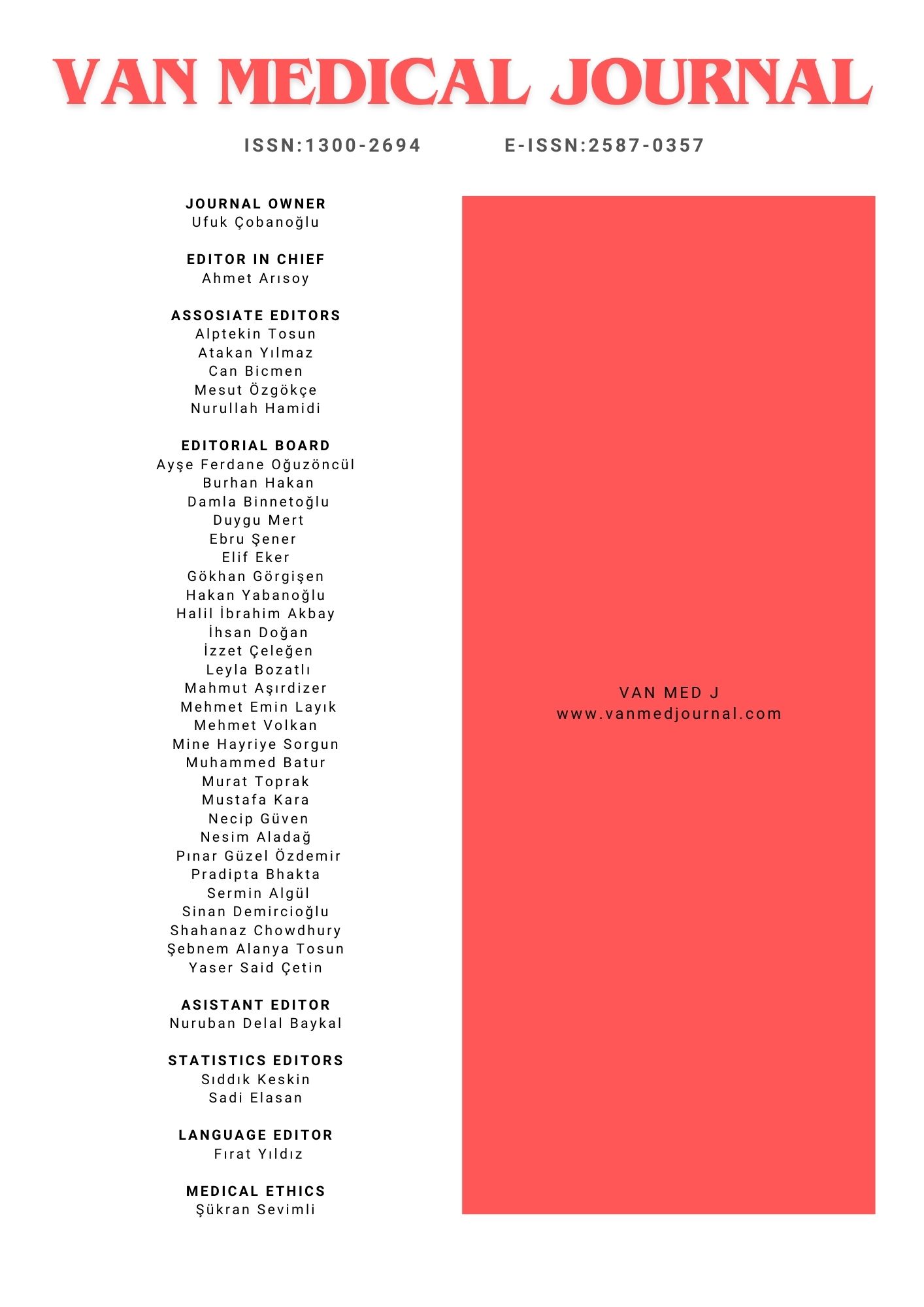Prevalence of Posttraumatic Stress Disorder and Depression among the Individuals within Faculty of Dentistry, who Experienced Earthquake and who did not, and the Relation with Temporomandibular Joint Disorders
Cennet Neslihan Eroğlu1, Serap Keskin Tunç1, Mesut Işık2, Sadi Elasan31Yuzuncu Yil University Faculty Of Dentistry Department Of Oral And Maxillofacial Surgery, Van, Turkey2Yuzuncu Yil University Faculty Of Medicine Depatment Of Psychiatric, Van, Turkey
3Yuzuncu Yil University Faculty Of Medicine Biostatistics Department, Van, Turkey
INTRODUCTION: The present study aimed to investigate the prevalence of Posttraumatic Stress Disorder (PTSD)-depression among the volunteers within the Faculty of Dentistry, both who experienced earthquake and who did not, as well as to evaluate these subjects in terms of temporomandibular disorder (TMD).
METHODS: A total of 124 volunteers from the Faculty participated in the study. All of the subjects completed the Research and Diagnostic Criteria/ Temporomandibular Disorders (RDC/TMD) questionnaire (Axis I-II) and the PTSD questionnaire. Data obtained from both questionnaires were evaluated and then the percentage of population sampling was presented. Statistical analysis of data was done by one-way ANOVA and Chi-Square tests using SPSS 12.0 Windows program.
RESULTS: The study comprised 62 subjects that experienced earthquake and 62 subjects that did not, of whom 66 were female and 58 were male with the mean age of 22.76 years. The sign of PTSD was determined in 12.9% and depression was determined in 38.7% of overall volunteers. Myofacial pain was the leading finding (60%) in the subjects with PTSD. Complaints about joint was present in 54.2% of the volunteers that had the signs of depression and the primary (54%) cause of these complaints was osteoarthrosis. Of the volunteers, 48% were psychologically healthy, and 3.3% of these subjects had joint-related complaints.
DISCUSSION AND CONCLUSION: It should not be ignored that TMD involves substantial proportion of the subjects having the signs of PTSD and depression. Solving the problems of these subjects by multidisciplinary approach when necessary may be more beneficial for the patients.
Diş Hekimliği Fakültesindeki Deprem Yaşayan ve Yaşamayan Bireylerde Travma Sonrası Stres Bozukluğu-Depresyon Görülme Sıklığı ve Temporomandibular Eklem Hastalıklarıyla İlişkisinin Araştırılması
Cennet Neslihan Eroğlu1, Serap Keskin Tunç1, Mesut Işık2, Sadi Elasan31Yüzüncü Yıl Üniversitesi Diş Hekimliği Fakültesi, Ağız Diş Çene Cerrahisi Ana Bilim Dalı, Van2Yüzüncü Yıl Üniversitesi Tıp Fakülesi Psikiyatri Ana Bilim Dalı, Van
3Yüzüncü Yıl Üniversitesi Tıp Fakültesi Biyoistatistik Ana Bilim Dalı, Van
GİRİŞ ve AMAÇ: Bu çalışmada diş hekimliği fakültesindeki deprem yaşayan ve yaşamayan gönüllüler arasında Travma Sonrası Stres Bozukluğu (TSSB)-depresyon görülme insidansı ve bu bireylerin temporomandibular rahatsızlıklar (TMR) açısından değerlendirilmesi amaçlanmıştır.
YÖNTEM ve GEREÇLER: Çalışmaya fakülte bünyesinde 124 gönüllü katılmıştır. Tüm bireylere Temporomandibular Rahatsızlık/ Araştırma Teşhis Kriterleri (TMR/ATK) anketi (Eksen I-II) ve TSSB anketi uygulanmıştır. İki anket üzerinden elde edilen veriler değerlendirilerek toplumsal örnekleme yüzdeleri sunulmuştur. Verilerin istatistiki analizinde SPSS 12.0 Windows programında tek yönlü ANOVA ve Ki-Kare testleri kullanılmıştır.
BULGULAR: Çalışmaya yaş ortalaması 22,76 olan 66’sı kadın, 58’i erkek olmak üzere 62 deprem yaşamış, 62 deprem yaşamamış birey katılmıştır. Tüm gönüllülerin %12.9’unda TSSB, %38.7’sinde depresyon bulgusu tespit edilmiştir. TSSB tespit edilen bireylerde daha çok miyofasiyal ağrı (%60) görülmüştür. Depresyon bulgusu taşıyan gönüllülerin %54,2’sinde eklem şikayeti bulunmuştur ve bu şikayetlerin başlıca sebebinin (%54) osteoartroz olduğu görülmüştür. Gönüllülerin %48’i psikolojik açıdan sağlıklı idi. Bu bireylerin %3,3 eklem şikayeti tespit edilmiştir.
TARTIŞMA ve SONUÇ: TSSB ve depresyon bulgusu gösteren bireylerin TMR bakımından ciddi bir oran oluşturduğu göz ardı edilmemelidir. Gerekli durumlarda multidisipliner tedavi yaklaşımı ile bireylerin sorunlarının çözümüne gidilmesi hasta açısından daha faydalı olabilir.
Corresponding Author: Cennet Neslihan Eroğlu, Türkiye
Manuscript Language: Turkish

